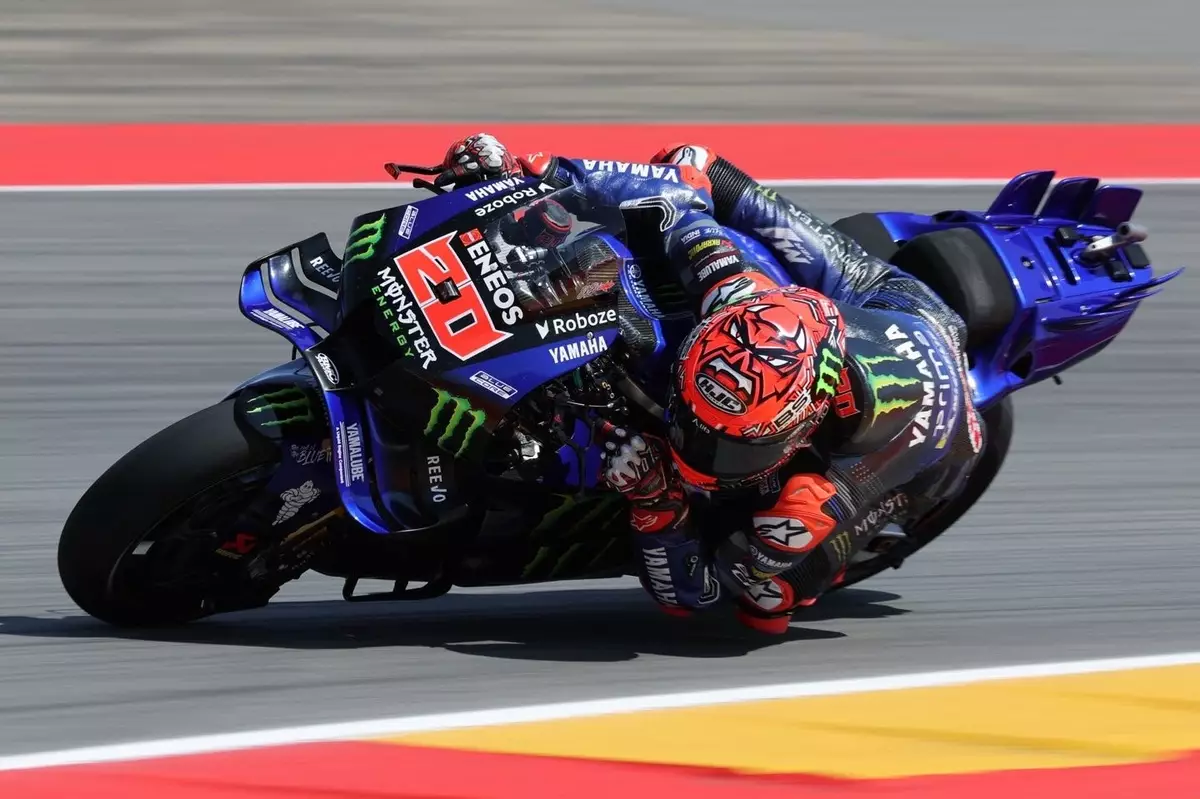The Aragon circuit, known for its low-grip conditions, has a reputation for challenging riders and machines alike. This recent event saw Yamaha’s YZR-M1 facing its most significant hurdles to date, particularly for their star rider, Fabio Quartararo. The unique characteristics of this track brought Yamaha’s deficiencies into sharp focus, with the lack of grip turning Friday practice into a frustrating affair. Quartararo’s bike exhibited tendencies to snap and jump out of corners—a stark reminder that even manufacturers with illustrious histories can find themselves grappling with unexpected troubles.
Riding at speed requires not just skill but an innate trust in the machine, which, unfortunately, was sorely lacking for Quartararo during this session. The French rider’s discontent was palpable; his frustration evident as he gestured wildly while navigating the track. It hurt his morale to witness Yamaha’s performance falter, especially as they languished near the bottom of the speed trap rankings—almost ten kilometers per hour slower than their competitors, like Brad Binder with KTM. This kind of performance disparity paints a troubling picture for any team, as raw speed often dictates racing success.
A Frustrating Day for Quartararo
After the day’s trials, Quartararo opted for solitude over team discussions, expressing a need to cool off. It’s no surprise; when a rider feels disadvantaged by their machine, it’s far from an ideal atmosphere for constructive collaboration. However, the seasoned racer managed to inject some levity into the situation when speaking with the media, cleverly remarking that they “almost made the pole position on the other side” of the grid. Such humor, though, belies the depth of frustration with which he was undoubtedly grappling behind the scenes.
Reflecting on his day, Quartararo highlighted the puzzling interaction between tire selection and the bike’s electronic systems. Despite his championship-winning pedigree, a ride that should offer confidence instead became a source of anxiety as he struggled with variables that should have been under control. “We don’t understand what really happened with electronics and stuff,” he admitted, a sentiment that surely resonates with anyone who has labored under the constraints of a seemingly inexplicable problem.
Understanding the Bigger Picture
Massimo Meregalli, Yamaha’s team director, echoed Quartararo’s sentiments regarding the struggles with rear grip—a critical element in a motorcycle’s performance. Two riders from the same team facing similar issues is not only concerning; it’s a signal of a deeper, systemic problem. Both Quartararo and Alex Rins found themselves trapped in a cycle of sliding rear wheels, faced with the overwhelming task of determining how to extract reliable performance from their bikes.
Meregalli was hopeful early in the day, especially after the first practice session. However, increasing track temperatures had a detrimental effect on grip, exacerbating an already challenging set of circumstances. For a team seeking to climb the ranks, such revelations are sobering. Following this, the realization that they must rectify their fundamental grip issues before they can hope for success suffocates any initial optimism.
A Challenging Road Ahead
In motorsport, particularly in disciplines like MotoGP, the stakes could not be higher. Every race is not just a competition against rivals but a test against the very machinery that supports the riders. Yamaha now faces an uphill battle; they must unravel the complexities of their electronic systems, all while navigating the variable conditions of the track. Quartararo’s plea for a “golden fix” underscores a critical juncture for the team.
For those closely observing the tournament, Yamaha’s current issues serve as a stark reminder of the unpredictability of motorsport. The balance of power can shift dramatically as teams race to innovate and adapt. In the competitive world of MotoGP, one race can define a season, and Yamaha must now pull together its resources, establish cohesion among its engineers, and restore Quartararo’s confidence to regain their foothold in the championship race. With tireless dedication and an unwavering commitment to excellence, the path forward can transform adversity into a resurgence.


Leave a Reply